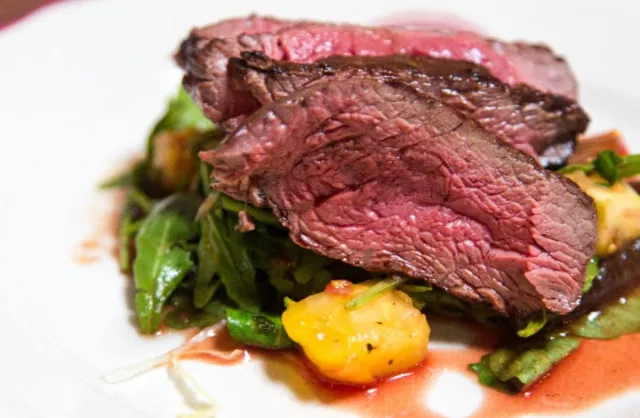Many are curious why rare steak is considered safe to eat, but consuming rare chicken can pose health risks.
Many people enjoy their steak cooked rare or medium-rare, but the same cannot be said for chicken.
If you’ve ever wondered why it’s safe to eat beef steak that’s not fully cooked while chicken must be cooked all the way through, you’re not alone.
This question comes up often, and the answer lies in the way these meats are prepared and the bacteria they can carry.

We can eat rare steak but not rare chicken for several risks
When it comes to food safety, different types of meat present different risks.
The different bacteria in each type of meat
Chicken is known to carry harmful bacteria such as Salmonella and Campylobacter.
These bacteria can cause serious food poisoning if the chicken is not cooked thoroughly.
The Centers for Disease Control and Prevention (CDC) warns that eating undercooked chicken can lead to gastrointestinal illnesses.
These illnesses include diarrhea, fever, and abdominal cramps.

In contrast, steak is primarily made up of muscle tissue from a single cut of meat.
When beef is slaughtered, any bacteria present are usually found on the surface of the meat.
This means that if you sear the outside of the steak at a high temperature, you effectively kill these bacteria.
As a result, the inside of the steak can remain rare or even raw without posing a significant health risk.
The structure of meat
The key difference between chicken and beef lies in their physical structure.
Chicken meat is more porous than beef. This porosity allows bacteria to penetrate deeper into the meat.
Because of this, it is essential to cook chicken to an internal temperature of 165°F (75°C) to ensure that all harmful bacteria are killed.

Beef, on the other hand, does not have this same risk.
When you cook a steak, the high temperature can kill bacteria on the surface.
The interior can remain at a lower temperature, allowing for a rare or medium-rare steak to be safe to eat.
Cooking temperatures and safety
The USDA has established safe cooking temperatures for different types of meat.
For chicken, the minimum safe cooking temperature is 165°F (75°C). This ensures that all harmful bacteria are eliminated.
For beef steaks, the USDA recommends a minimum temperature of 145°F (63°C) for safe consumption.
This means that steak can be safely consumed at lower temperatures if cooked properly.

When dining out or cooking at home, it is essential to use a meat thermometer to check the internal temperature of meat.
This tool helps ensure that you are cooking meat to the right temperature to avoid foodborne illnesses.
Public perception and culinary habits
Cultural norms and culinary practices also play a role in how different meats are prepared and consumed.
In many cultures, rare steak is celebrated for its flavor and tenderness.
It is often served with sauces and sides that enhance its taste.
On the contrary, chicken is typically cooked until it is completely white and juices run clear.
This practice has become ingrained in our cooking habits due to the health risks associated with undercooked poultry.
Despite the risks, some people still consume raw or undercooked chicken in certain dishes, such as chicken sashimi or tartare.
However, these practices are controversial and carry a significant risk of foodborne illness.